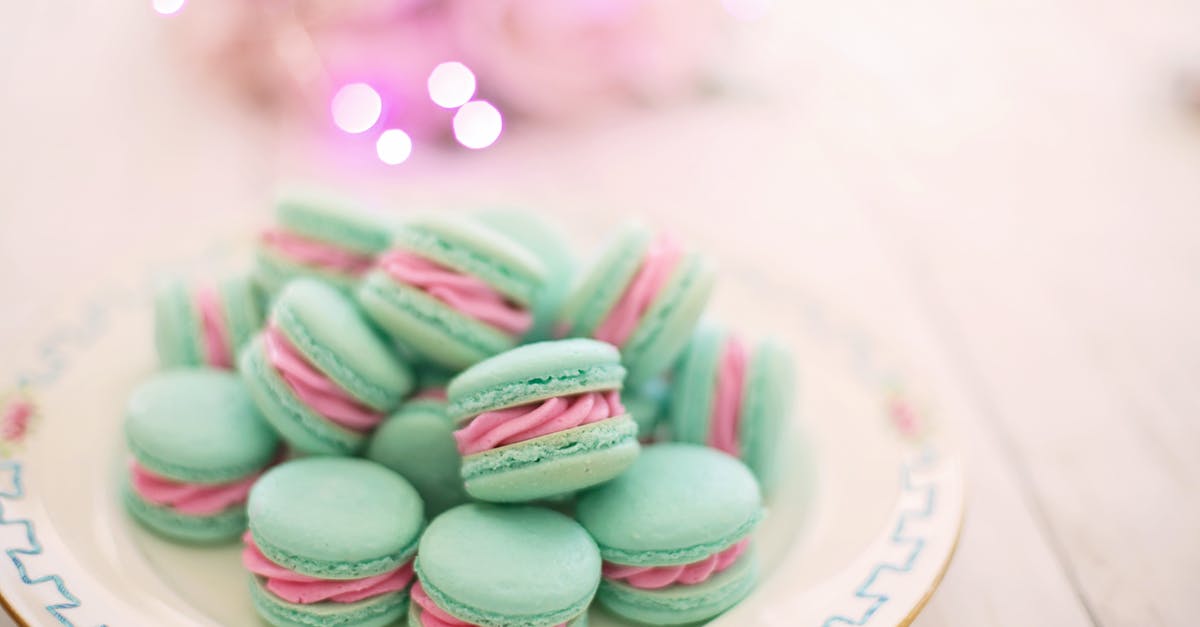What is the maximum internal temperature of baked goods?

Obviously this will vary depending on the size/shape and ingredients used. But how hot does it get inside, say, a loaf of bread? A cake? How wide is the variation? What ingredients (or factors other than shape/size and cooking temp/time) might affect this, and in what direction?
Edit: to clarify, I mean "maximum temperature during normal cooking."
Best Answer
Jolenealaska's answer provides the basics -- internal temperatures over boiling inside baked goods just don't tend to happen under normal conditions. The reason is because most doughs and batters contain a lot of water. The final baked goods generally still retain a lot of that water, too. When the dough is hot and in the oven, however, that water will be heated and will gradually evaporate from the dough.
Assuming you get to close to 212F/100C, at normal atmospheric pressure, water will actually be "boiling" out of the dough. For the external surface of baked goods, that moisture can leave rapidly enough that the surface rises to higher temperatures (forming a crust). But internally, the moisture keeps boiling out, maintaining a temperature below or at boiling. Unless you have a weird situation where you are somehow cooking your baked goods under pressure, water will continue evaporating out of the batter/dough at 212F/100C until the dough/batter has pretty much turned into a dry cracker internally. That's the only way you'll ever achieve an internal temperature much over 212F/100C: to bake things until they are basically dried out inside (which is not a desirable feature in most baked goods).
As for the maximum useful temperature, that depends on the baked good and the ingredients. I have to disagree with Jolene slightly here and say I have a number of bread recipes that recommend an internal temperature of 205F or so. Temperatures over 200F are only generally for lean crusty bread doughs (like baguettes or something), which often start with a fairly moist dough. The high internal temperature means that more moisture has been removed, which will keep the crust more firm and, well, "crustier."
The more enriched your bread dough, generally the lower the desired final temperature. Basically, above 175F or so, the gluten coagulation is complete and the dough structure is formed. So, bread can be "done" anywhere from 175F to about 210F. If you have a very rich sandwich loaf or brioche or something, you might find that a temp of 180-190F is sufficient. Large loaves may also need different temperature handling than small buns, for example, since residual heat will continue the baking process outside the oven longer in larger loaves, but it also takes longer for moisture to migrate out of the center of a large loaf.
As for other baked goods, similar advice applies. Cakes and quickbreads are generally done once you get to around 190-195F, though the ingredients will really affect this. A "drier" style cake without lots of "stuff" in the batter (e.g., pound cake) might go to 205F or even 210F before it's "done" according to normal criteria, while a quickbread made with loads of fruit might "get stuck" in the range around 190-195F for a long time because there's just so much moisture. (And it's basically done there anyway.) For cakes or other baked goods which are meant to be excessively moist (with a fudge interior or something), 175F might be sufficient, since again that's roughly the temperature when baked goods get a final "set" structure. (Of course, there are also things like "lava" cakes where the interior is not actually fully cooked; in that case, internal temp should be determined by food safety criteria sufficient to cook the eggs, which might be a little lower.) And again, shape and size are often important for these numbers, because residual heat will lead to further stabilizing of the structure in large things after they come out of the oven. So, a particular cake might be "done" at 195F, but making cupcakes with the same batter might require 200 or 205F to get the same texture.
It's hard to specify a generic all-purpose desirable maximum temperature, because various changes continue to happen to baked goods after the structure gets set at 175F or so. Between 175F and 195F, the starches continue to gelatinize and some enzyme activity will continue. Above 195F, it's mostly about drying things out to the desired final texture.
Pictures about "What is the maximum internal temperature of baked goods?"



Quick Answer about "What is the maximum internal temperature of baked goods?"
The internal temperature of cake varies based on the formula, ranging from 200°F to 210°F. Most classic cakes (butter cakes, pound cakes, chocolate and vanilla cakes, etc.) hover around 210°F when they're fully baked, but this isn't always a reliable threshold to look for.What is the highest temperature in baking?
A moderate oven has a range of 350\u2013375 \xb0F (180\u2013190 \xb0C), and a hot oven has temperature set to 400\u2013450 \xb0F (200\u2013230 \xb0C). A fast oven has a range of 450-500 \xb0F (230\u2013260 \xb0C) for the typical temperature.What is the correct oven temperature in baking bakery products?
325 to 350\xb0F (163 to 177\xbaC): Probably the most common range for everyday baking. Temperatures over 300\xb0F are where you begin to see caramelization (browning of sugars) and the Maillard reaction (browning of proteins). Cakes and cookies are also typically baked at 350\xb0F since they have a fair amount of sugar.What should the internal temperature of muffins be?
INTERNAL TEMPERATURE = 209\xb0 - 210\xb0 F. COOL: Let the muffins cool in the pans 5 -10 minutes only, then transfer to a cooling rack, or place them on top of the muffin pan to finish cooling. Make sure they sit flat and level to cool. Allowing them cool completely in the pan will cause them to sweat and stale faster.Can you bake a cake at 160 degrees?
I normally stick to the given temperature and keep an eye and nose on the bake. I bake at 160c fan oven for approx 45 -50 minutes for that size. Obviously, all ovens vary so it is essential to babysit the cake until done.The Real Reason We Bake Everything At 350 Degrees
More answers regarding what is the maximum internal temperature of baked goods?
Answer 2
You would never want to bake anything past the boiling point of water. Bread gets close. It depends on the recipe just how close, but I've never seen any recipe that looks for an internal temperature of over 200F (93C). Bread is generally "done" at 190F (88C). At temperatures at or above the boiling point of water, you're getting into candy making territory, way beyond anything called "baking".
Sources: Stack Exchange - This article follows the attribution requirements of Stack Exchange and is licensed under CC BY-SA 3.0.
Images: Jill Wellington, Jill Wellington, Jill Wellington, Maria Orlova
